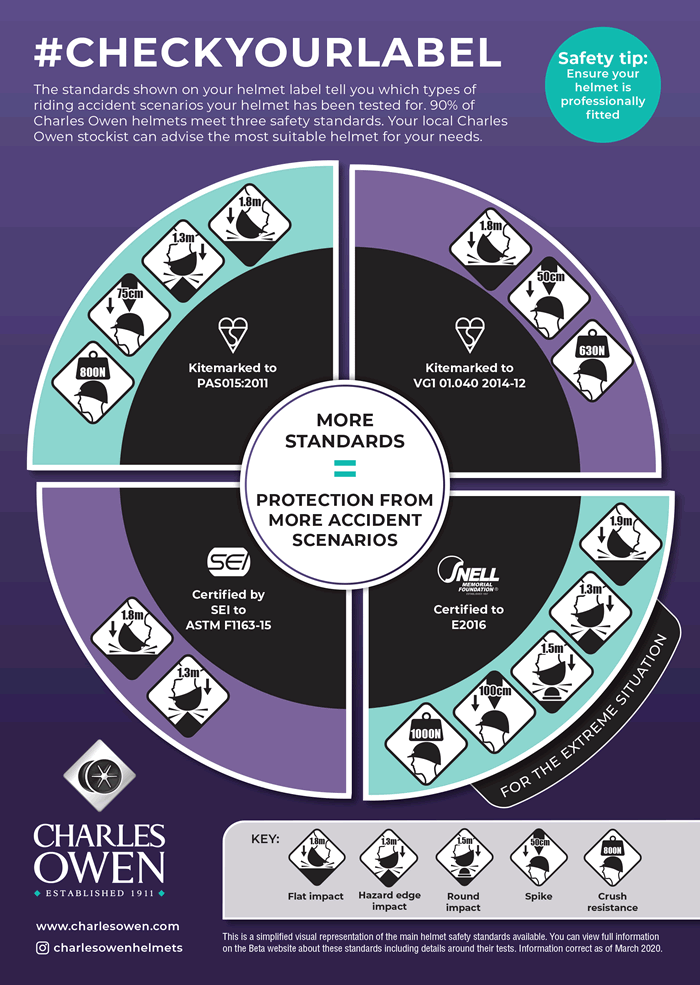Riding Helmet Safety Standards
Did you know that your riding helmet must meet a minimum safety standard to compete at a USEF show? Do you know what the different safety standards are and what they mean?
Your helmet protects one of the most important parts of your body, so it's important to understand what it's certified to do so that when you're shopping, you're getting the most protection possible.
Each certification standard stringently tests different impacts and accident scenarios involving a horse, so the more the better. A standard consists of scientific tests that mimic riding accidents (falls, kicks, crushing) that the helmet must withstand. Cycling and motorbike helmets do not offer the same level of protection and are unsuitable for horse riding.
ASTM
ASTM International is the American Society for Testing and Materials. This organization creates testing standards for manufacturers to meet. ASTM does not test or certify products. It provides the standard for laboratories to do the testing. Helmet manufacturers choose the laboratory and submit helmet models for testing to the ASTM standard. Per USEF guidelines, all helmets must meet the ASTM F1163:2015 standard.
The specifications desired by ASTM testing concern the ability of the helmet liner to crush on impact; this ensures that it absorbs the bulk of the concussion rather than that concussion being absorbed by one’s head. Another criteria that must be met is the presence of a three-point harness that it is secure--jaw straps are preferred as the most secure method of affixing the helmet in place during a fall and/or a horse’s kick. And, a third criterion of the standard protects the rider’s neck from dangerous torque by ensuring that the outer surface of the helmet shell is able to slide along the ground.
SEI Testing involves multiple steps with computer sensors documenting the force of impact:
- The helmet is dropped onto a flat anvil from a height of six feet from various angles and directions.
- The helmet is also dropped onto an anvil with a sharp corner to simulate the impact incurred from a rider’s head hitting a jump or the strike of a horse’s hoof.
- Then the helmet is placed on a head form that is comparable to human bone structure; with straps in place, the helmet is weighted, then dropped. The straps cannot stretch beyond a specified amount.
- The helmets are further tested for the three parameters above--concussion and retention--following freezing to minus 20o F, heating to 120 o F, and submergence overnight in water.
BSI
British Standards Institute develops helmet standards and tests them. The BSI Kitemark (PAS015 and VG1) checks one of every 200 helmets from a batch of 800 to 3,200 before they will issue an approval label. If the helmets do not pass the standard, then the entire batch must be destroyed.
The main difference between the two standards is that PAS 015:2011 has higher meaning performance requirements than VG1 01.040 2014-12, basically it has to perform better under laboratory tests then the VG1 standard.
PAS015:2011
Product Approval Specification (PAS) is the standard that must be met for riding helmets in Great Britain. It was developed and is tested by BSI.
PAS015 testing standard is widely used for equestrian helmet and still requested by many riders. As a consumer, it is good to know how does our head is protected by helmets and maybe can assess the possible injury when it happened. As a professional helmet solution provider, we would like to share these basic stuff that might help you.
Key aspects of the testing include:
- Shock absorption;
- Penetration resistance;
- Strength and effectiveness of the retention system;
- Durability of quick release mechanisms;
- Deflection of the peak
VG1 01.040 2014-12
This is the newest standard from the European Union commission. It was created according to British standards and adopted by the EU.
Snell
The SNELL E2016 is a more ‘extreme’ standard for riders looking for the upmost protection.
The key differences in testing that sets SNELL apart include a higher drop onto a flat surface, a drop onto a metal ball instead of a sharp metal edge, and a measure of crush resistance that uses greater force.
Here is an extremely helpful visual from Charles Owen showing the different standards:

MIPS
MIPS is not a certification standard, but rather a technology that has been added to helmets to try to reduce concussion risk.
MIPS has been designed to add protection against rotational motion transmitted to the brain from angled impacts to the head. Rotational motion is the combination of rotational energy and rotational forces – these forces both affect the brain and increase the risk for both minor and severe brain injuries.
When implemented in a helmet, MIPS’ added protection system has been proven to reduce rotational motion by redirecting the energies and forces with are otherwise transmitted to the brain.
The MIPS system works by the including a low friction layer inside the helmet. This produces a sliding motion which allows your head to move 10 – 15mm, in all directions, inside the helmet which reduces the rotational motion to the brain.
The Importance of Multiple Standards - More Is Better!
While some standards look closely at preventing the most severe types of head injuries a rider may experience, others protect from the more commonplace.
No one standard can accurately predict the specific type of accident or fall a rider may experience as there are too many variables to take into account: if the fall is on concrete, grass or in an arena; whether the rider is kicked when he or she falls; whether the horse is wearing studs/caulks; or if a horse falls on the rider, causing a crush injury.
Therefore, a helmet that meets multiple standards has been proven to provide the most comprehensive protection and cover a wider range of the potential accident scenarios a rider might experience.



